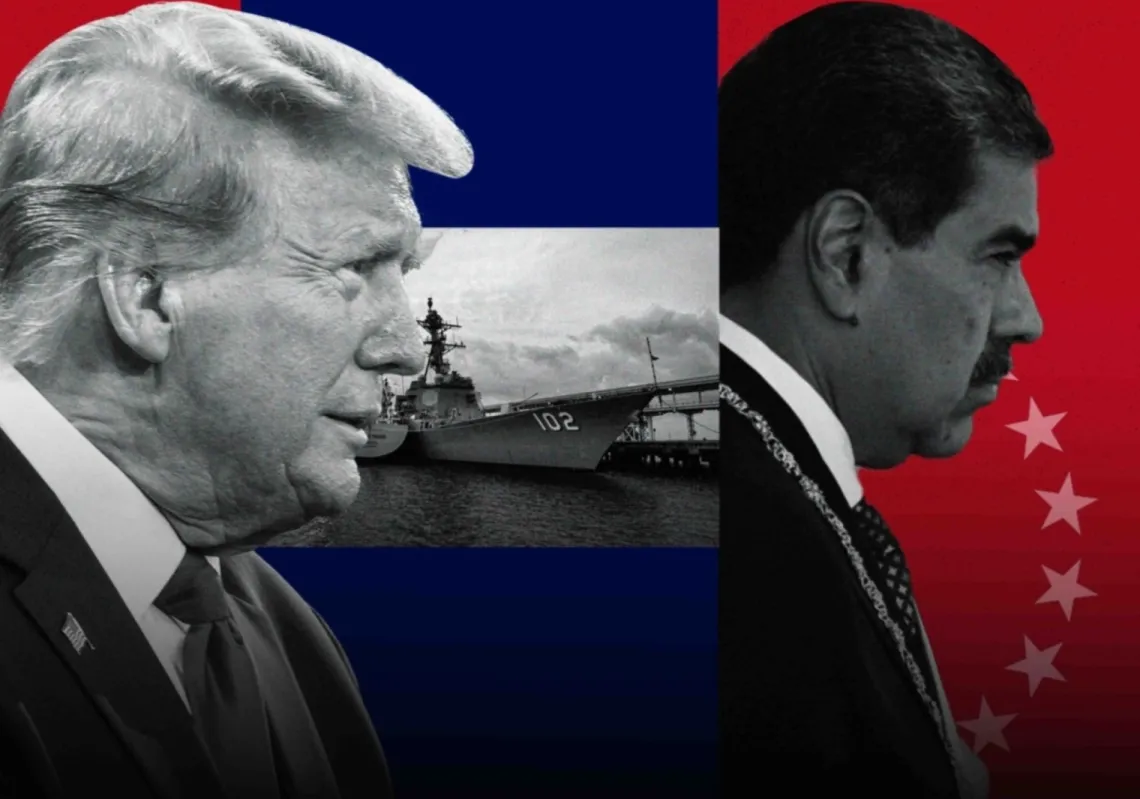Ten years ago, jihadist militants were on the rampage in Syria and Iraq. With territory the size of the United Kingdom under his control, the leader of the so-called Islamic State (IS), Abu Bakr al-Baghdadi, made a rare public appearance in Mosul and declared a Caliphate, demanding that Muslims worldwide pledge their allegiance and submit to his authority. While neither the Caliphate declaration nor the call for support held any semblance of legitimacy, IS’s actions were unprecedented and proved to be debilitating for international security.
Whilst its fighters were massacring thousands in Iraq and Syria and forcing millions into its medieval rule, IS sought to eliminate northern Iraq’s minority Yazidi community while publicly beheading Western hostages on high-definition videos. The scale of IS’s accomplishments, the shocking nature of its violence, and its claim to have established a state-like entity triggered the biggest global movement of foreign fighters ever recorded.
Ultimately, more than 50,000 people from over 110 countries around the world travelled to join IS in Syria and Iraq. The ripple effects were felt far and wide as terrorist groups across Africa, the Middle East, and Asia flocked to join the IS cause, becoming wilayat or states within the group’s Caliphate project.
At this point, ten years ago, IS may have enjoyed a short-lived sense of momentum. Within weeks, the United States had begun intervening militarily in Iraq and Syria while mobilising a similarly unprecedented international coalition of dozens of countries dedicated to combating and defeating the IS threat.
That coalition, which eventually gained 87 country members, committed resources to fight IS on the ground while combating the group’s financing, its propaganda and its international recruitment, as well as supporting the stabilisation of territories liberated from its terrorist rule. As those efforts got underway and worked to curtail IS’s influence in Iraq and Syria, the group inspired and coordinated a global campaign of terrorist attacks that killed thousands on every continent except Antarctica.
By early 2019, after four-and-a-half years of effort, parallel military campaigns in Iraq and Syria had captured every inch of IS territory, rendering IS’s ‘state’ there effectively defeated. Tens of thousands of IS militants had been killed or captured, and to all extents and purposes, the group had virtually disappeared from the battlefield. Since then, much of the international focus and attention on dealing with a ‘sustainable’ or ‘durable’ defeat to IS has faded away, as other issues took to the fore, including wars in Ukraine, Sudan and Gaza, as well as broader issues of great power competition, regional de-escalation and diplomatic re-engagement.
From the perspective of tackling the threats and challenges posed by IS, this loss of focus in recent years has been deeply problematic for several reasons. Firstly, IS’s Caliphate declaration on 29 June 2014 transformed the terror group into something global, leaving its heartlands in Iraq and Syria vitally important but far from determinative of the group’s survival. Second, physical or tangible territory does not define IS’s perception of its ‘state’ or ‘Caliphate.’ In fact, IS first declared a ‘state’ in Iraq in 2006, and although it proved very short-lived, that ‘state’ has survived and only grown in the 18 years since, according to IS.
Consequently, the territorial victories proclaimed in Iraq and Syria in 2018 and 2019 were far from mission accomplished, as the IS threat has dispersed around the world and merely evolved in its Iraqi and Syrian heartlands. In truth, there are now more IS groups in existence, active in more countries and with more territory under their control than ever before. Far from having dealt IS a crippling defeat, the terrorist organisation presents a greater, more diverse and more complex range of threats in an international environment in which the attention, resources and political will to focus on counter-terrorism is at an all-time low.
Africa
The area of the world where IS has grown the most in recent years is Africa, with jihadists currently active in at least 28 countries across the African continent. In the past year, nearly 50% of all terror attacks worldwide have been in Africa. In the West of the continent— where 25% of all terror attacks occur—a series of coups in Mali, Niger and Burkina Faso have opened a path for a surge in IS activity in the Sahel. IS’s affiliate in the Sahel (Islamic State in the Greater Sahel, ISGS) has doubled the scale of territory under its control since early-2023, including in Mali, where it has begun deploying its brutal forms of governance, including al-hisba police whose violent imposition of severe moral codes was infamous in Syria and Iraq.
Earlier this year, ISGS’s long-running war with Al-Qaeda’s Sahel affiliate, Jamaat Nusrat al-Islam wal Muslimin (JNIM), eased, allowing a fuller dedication of resources to the fight against local juntas whose own security capabilities have dwindled amid political upheaval.

While that inter-factional hostility has since resumed, coups and political strife have led to the expulsion of US and French forces across the Sahel region and their replacement, in many cases, by Russian personnel and mercenaries. While the record of counter-terrorism success by American and French forces was admittedly mixed, their Russian counterparts appear to have exacerbated corruption while covering for and participating in acts of brutality, discrimination and criminality that have fueled the local narratives of IS and Al-Qaeda.
The prominence of the Sahel within IS’s global operation has also seen it establish and manage a flow of incoming foreign fighters from North and East Africa, as well as Europe. According to United Nations monitoring, a majority of these foreign fighters emanate from elsewhere in Africa, but some are Arabs, and others have originated in Europe.
A series of interlinked arrests in Spain and Morocco tied to ISGS in recent months point to a clear logistical and recruitment network spanning across Africa and into southern Europe. Other counterterrorism cases in Europe indicate that ISGS has sought to recruit from as far north as the United Kingdom, from where it has also received guidance on the design of drones to deliver locally manufactured chemical weapons.
Nearby, IS also retains a high level of operation in Nigeria and the neighbouring Lake Chad region, with the group’s West Africa Province sustaining the most consistently high level of operation of any IS affiliate worldwide. With ISGS surging in Mali and Niger, ISWAP can only benefit next door in Nigeria.
Meanwhile, IS also continues to exert itself in the Democratic Republic of Congo and neighbouring Uganda, evading and challenging the ongoing joint DRC-Ugandan military campaign known as Operation Shujaa. Under Seka Baluku’s leadership, IS has also turned its guns on Western tourists in Uganda, notably executing South African and British tourists in the Queen Elizabeth National Park. To the north, in Sudan, IS also maintains an active but covert front led by a senior IS Central leader and alleged relative of Abu Bakr al-Baghdadi: Abu Bakr al-Iraqi. From Sudan, this cell is thought to operate as a central cog in IS’s entire Africa operation, coordinating the movement of manpower, weapons, funds and more.
Beyond the Sahel, IS is also undergoing a resurgence in Mozambique, where the ongoing withdrawal of a regional military mission has created a vacuum into which IS is aggressively re-stepping. Since early this year, IS’s affiliate in Mozambique – also known as Ahlu Sunna wal Jamaa – has launched a succession of deadly assaults on towns like Macomia, Muidumbe, Mucojo, Chiure and Quissanga.
By themselves, Mozambiquan armed forces are proving almost entirely incapable of challenging this IS offensive, which is targeting the region’s majority Christian population and could, if things continue apace, reorient its target-set onto the country’s sizeable gas fields run by French conglomerate Total.
Elsewhere in Africa, IS maintains a small but strategically vital presence in northern Somalia, where its affiliate and recently killed leader Abdul Qadir Mu’min runs the al-Karrar Office—a lucrative hub for the collection and dissemination of IS funds across Africa through the Middle East and into South and Central Asia.
According to US intelligence and international monitoring, the al-Karrar Office is the most financially impactful of any entity managed by IS’s worldwide General Directorate of the Provinces. By contrast, the al-Furqan Office in Nigeria, run by Abu Bakr bin Mohammed ibn Ali al-Mainuki, does not maintain anywhere the same level of international reach or strategic impact on IS’s global operations.
While Mu’min was reportedly killed in a US air strike in late May, it is likely he maintained a clear line of succession, given the small and tight-knit nature of IS’s operation in Somalia. Meanwhile, reports citing unnamed US officials that Mu’min was, in fact, IS’s global leader do not appear to be credible, though it is feasible that he had assumed leadership of IS’s General Directorate of Provinces.















